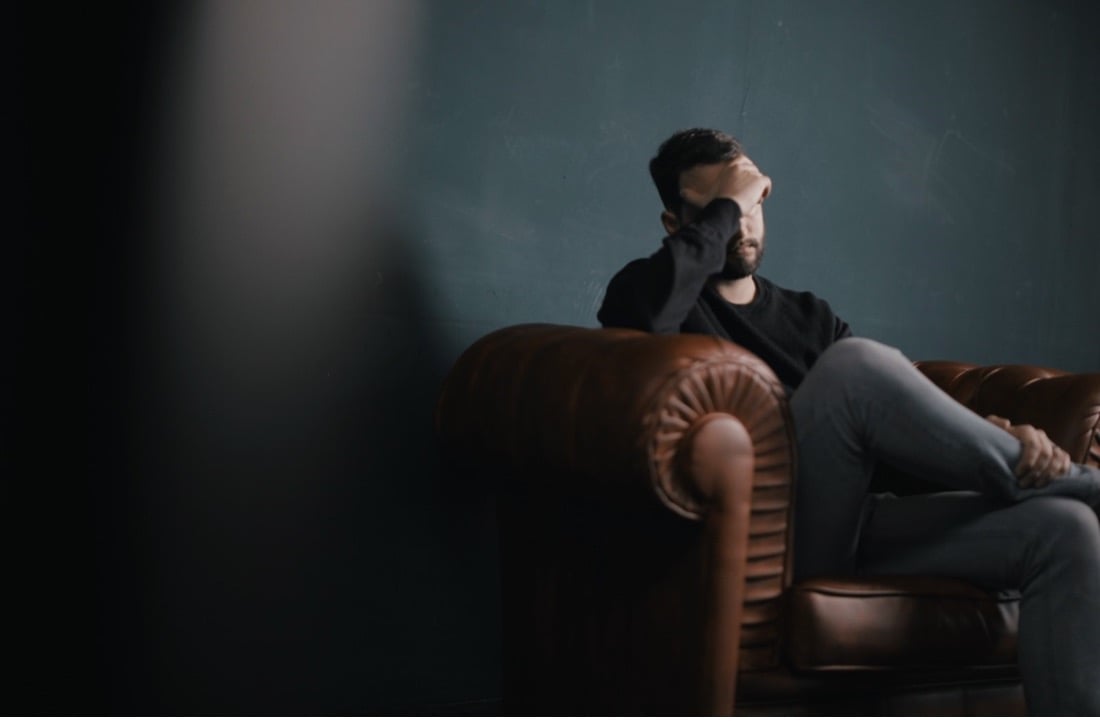Testicular Cancer
What is Testicular Cancer?
An estimated 1 in 250 people are diagnosed with testicular cancer throughout their lifetime. Testicular cancer is considered rare because of this lower diagnosis rate; however, it is the most prevalent cancer in individuals ages 15 to 35 who were assigned male at birth.
Cancer occurs when cells act abnormally. Abnormal cells grow and multiply when they are not supposed to. Testicular cancer typically forms in one or, less commonly, in both testicles. (American Cancer Society; Cleveland Clinic; Mayo Clinic)
Testicles, or testes, are held in the scrotum, the skin sac located under the penis. Testicles have two main functions (American Cancer Society):
- They produce androgens (male hormones) like testosterone.
- They produce sperm that is needed to fertilize an egg for pregnancy.
Supporting Content
Testicles contain two types of cells supporting these main functions: germ and stromal cells. Both of these cells are susceptible to developing cancer. Treatments and prognoses may differ based on the type of testicular cancer. Luckily, testicular cancer is highly treatable. (Cleveland Clinic; American Cancer Society)
Types of Testicular Cancer
There are three main categories of testicular cancer: germ cell tumours (GCT), carcinoma in situ (CIS), and stromal tumours.
Germ cell tumour (GCT)
90% of testicular cancer develops within the germ cells. These cells are found in the testicles and produce sperm. The two types of germ cell tumours, seminoma and non-seminoma, are equally likely to occur when living with testicular cancer. (American Cancer Society; Canadian Cancer Society)
- Seminoma: These tumours spread slower than non-seminoma. (American Cancer Society; Canadian Cancer Society)
-
- Classical seminoma: More than 95% of seminoma tumours are Classical seminoma. They usually occur in individuals between the ages of 25 to 45.
- Spermatocytic seminoma: This tumour is rarer, grows slower and does not spread as quickly. They are most likely to affect individuals around the age of 65.
- Non-Seminoma: Typically affects individuals in their late teens or early 30's. (American Cancer Society; Canadian Cancer Society)
-
- Embryonal Carcinoma: These tumours often mix with other types, making up 40% of non-seminoma tumours.
- Yolk Sac Carcinoma: It is the most common form of testicular cancer found in young children, especially infants and are more likely to be treated successfully. These tumours are more of a concern for treatment when found in adults.
- Choriocarcinoma: this tumour is extremely rare and found more often in adults. Choriocarcinoma cells are more likely to be found with other GCT cells. Pure choriocarcinoma cells can spread to other body areas such as bones, lungs, or the brain.
- Teratoma: Are typically mixed germ cell tumours and are broken down into three subtypes:
-
-
- Mature: these teratomas rarely spread. If removed through surgery, there is a chance of recurrence.
- Immature: they are more likely to spread and reoccur after surgery.
- Somatic type malignancy: they are extremely rare. These cells tend to look and act like cancer cells found outside of the testicle.
-
Individuals with testicular cancer may have both seminoma and non-seminoma germ cell tumours (mixed germ cell tumours), which are treated as non-seminoma.
Carcinoma in situ (CIS)
Individuals with this type of germ cell cancer may not show signs of testicular cancer or form a lump in the testicle, which makes CIS hard to diagnose. A biopsy (a sample of tissue taken from the body to examine it more closely) is the only way to detect CIS. CIS cells can spread into the lymph nodes or travel through an individual's bloodstream. However, this type of cancer does not always become invasive. (American Cancer Society)
Stromal tumours
This type of tumour often forms in the hormone-producing tissues of the testicles. Adults have a lower rate (less than 5%) of developing this tumour, while children have a higher rate (20%). There are two types of Stromal tumours: Leydig and Sertoli cell tumours. (American Cancer Society):
- Leydig cell: these tumours affect the area of the testicle that produces male sex hormones. Leydig cells usually produce more androgen but can also produce estrogen. Most of the tumours are non-cancerous (benign). They are not as likely to spread but are also less likely to respond to chemo or radiation therapies.
- Sertoli cell: these tumours affect the cells that support the germ cells that produce sperm. They are similar to Leydig cells in that they are more often than not benign and are less likely to respond to chemo and radiation therapies.
Signs and Characteristics
Individuals with testicular cancer may experience the following signs and characteristics. (Cleveland Clinic; NIH):
- Painless lump or swelling in either testicle
- Swelling or sudden build-up of fluid in the scrotum
- Heaviness or change in how the testicles feel
- Discomfort or pain in the scrotum or testicles
- Dull ache in the lower abdomen or groin

Screening and Detection
There are no standard screening tests used to detect testicular cancer. Individuals are typically the ones who discover testicular cancer signs and characteristics in their bodies. Individuals should understand their testicles and talk to their general practitioner if there are changes from the typical look and feel.
Medical practitioners will typically look at an individual's medical records and family history and look for (Canadian Cancer Society):
- Testicular cancer and other types of cancer
- Risk of testicular cancer
- Undescended testicle (a testicle that hasn't moved into its proper position in the bag of skin hanging below the penis before birth)
- Germ cell neoplasia in situ (abnormal cells that, without treatment, may develop into cancer)
- Klinefelter syndrome (individuals born with an extra X chromosome)
Some medical practitioners recommend regular testicular self-examinations for higher-risk individuals. Early detection is always important to improve cancer outcomes. (My Health Alberta; NIH)
A routine physical exam can include:
- Ultrasound: A testicular ultrasound creates an image of the scrotum and testicles. It can help determine any lumps that could be present on the testicles, whether on the inside or outside, and if they are solid or fluid-filled lumps. This ultrasound can lead to a diagnosis of potential marking of a cancerous tumour. (Mayo Clinic; CCS)
- Blood tests: A blood test determines the tumour markers in an individual's blood. Tumour markers are substances that occur regularly in the blood, but the level of tumour markers may elevate through certain situations such as cancer. High tumour markers can lead to the potential risk of testicular cancer. (Mayo Clinic; CCS)
Self-Examination
The prevention of testicular cancer is not known as the cause of the cancer is not clear. However, some steps can help in identifying testicular cancer at the earliest stages. Routine self-exams can detect any changes and bring awareness to the condition of the testicles. (Mayo Clinic; ACS)
Some doctors will recommend self-examinations. Here are some key steps when conducting a self-exam: (Mayo Clinic; ACS)
Step 1
Step 2
Step 3
Not all changes are known to be testicular cancer, depending on the circumstances. Please discuss with your general practitioner if there are any unusual signs of change. Click here to learn more about self-examinations and how to perform a self-exam.
Testicular Cancer Stages
While there are various types of testicular cancer, they can be identified and diagnosed at different stages. Different stages of testicular cancer are treated differently according to type, tumour size, and other factors. For more information on cancer staging, visit Cleveland Clinic's staging page here. Stages for testicular cancer are as follows (Cleveland Clinic, Canadian Cancer Society):
- Stage 0: Abnormal cells have or are developing inside the testicle.
- Stage 1A: The cancer is in the testicle and tube attached to the testicles (epididymis). At this stage, the inner layer of the membrane surrounding the testicle may also be affected. At this point, tumour markers are normal.
- Stage 1B: Similar to stage 1A, tumour markers are normal. At this stage, cancer will have either:
-
- Spread to the outer layer of the membrane around the testicle.
- Spread to the lymph node vessels or blood vessels in the testicle.
- Spread to the scrotum or spermatic cord in addition to lymph node and blood vessel.
- Stage 1S: The tumour is anywhere in the spermatic cord, scrotum, or testicle, and tumour markers are elevated.
- Stage 2A, 2B, 2C: Tumour marker levels are slightly higher than usual, and cancer has spread to more than one lymph node in the groin. Stage 2A's tumours are no bigger than 2cm, 2B is between 2cm and 5cm, and 2C is bigger than 5cm.
- Stage 3A: The cancer is now considered metastatic testicular cancer, with cancer found in lymph nodes other than the groin or found in the lungs. At this point, one or more tumour markers are only slightly elevated.
- Stage 3B: Similar to stage 3A, but tumour markers are moderately elevated.
- Stage 3C: Similar to stages 3A and 3B. Cancer has spread to other body parts.
It is important to note that testicular cancer survivors may experience a recurrence of testicular cancer or may develop a new type of cancer elsewhere in the body, known as second cancer.
Risk Factors
Individuals may have testicular cancer without having any known risk factors. Although this could be the case, certain factors can increase an individual's risk of developing testicular cancer. These factors include (Mayo Clinic; JHM; ACS; Canadian Cancer Society):
- Age: Testicular cancer is most common in men between the ages of 15 to 35.
- Undescended testicles (cryptorchidism): An individual is at higher risk if the testes did not move into their proper position (bag of skin hanging below the penis) before birth.
- Race and ethnicity: Caucasian men are more likely to have testicular cancer than men of African, Hispanic, Latino, or Asian descent.
- Health history: If an individual has a medical or family history of testicular cancer, they are at higher risk.
- HIV: If an individual has human immunodeficiency virus (HIV), particularly AIDS, it can increase the risk of testicular cancer.

Prevention
Some experts suggest the correction of undescended testicles (cryptorchidism) in children to prevent testicular cancer. Various factors can increase the risk of developing testicular cancer. Some risk factors, like family history, cannot be prevented. It is important that you visit your family doctor to evaluate risk factors and discuss prevention. (American Cancer Society, Mayo Clinic)
Treatment
After an individual is diagnosed with testicular cancer, a doctor can recommend cancer care treatments. The type of treatment will depend on several factors, including an individual's health, cancer stage, and tumour type.
Treatment for seminoma cancer includes radiation therapy and chemotherapy. Treatment for non-seminoma cancer is chemotherapy. Discuss with a doctor to find the best treatment suited for you. (Cleveland Clinic; NIH)
Possible treatment for testicular cancer includes (Cleveland Clinic; NIH):
- Surgery: Surgery to remove the testicle(s) affected is a standard treatment used to remove cancerous cells from the testicle, regardless of the tumour or cancer stage. In some instances, radiation therapy or chemotherapy may be used after surgery or if testicular cancer returns.
- Radiation Therapy: A cancer treatment that uses high-energy x-rays; however, radiation is limited to treating seminomas. Radiation Therapy may be used after surgery to help prevent the tumour from returning.
- Chemotherapy: Chemotherapy is a treatment that may be used instead of surgery to remove the affected testicle(s) or after surgery. Depending on the type of testicular cancer, chemotherapy may be used before an RPLND procedure or after a radical inguinal orchiectomy.
- Surveillance: Monitoring the condition of an individual without any treatments can help detect early signs of testicular cancer or if cancer returns. Medical practitioners schedule exams and routine checks to monitor individuals.
Living with Testicular Cancer
Receiving a diagnosis of testicular cancer can be overwhelming, causing individuals to feel confused, stressed, and scared. If an individual is living with testicular cancer, here are a few things they should keep in mind (American Cancer Society; Canadian Cancer Society; Cleveland Clinic; Urology Care Foundation):
- Testicular cancer is often treated successfully, with a survival rate of 95%.
- Testicular cancer treatments, such as surgery to remove one or both testicles, can impact an individual's body image and self-esteem. To help cope with physical body changes, some individuals may have the possibility to reconstruct their testicles with a testicular prosthesis (artificial testicle).
- Some individuals may be affected by their testicular cancer diagnosis more than others. Finding emotional support from peers, friends, family, religious groups, support groups, and care teams is essential. Read the mental health section below to learn more about finding emotional and social support.
- Individuals with testicular cancer have a higher risk of infertility and lower testosterone levels, which may temporarily decrease sperm growth. To learn more about sexual health and testicular cancer, read the sexual health section below.
- It is important to continue performing self-examinations to detect any more changes in the look of one or both testicles.
- Complementary therapies such as acupuncture and meditation may help reduce stress, anxiety, and side effects caused by treatment.
- Follow-up care is important. Doctors will continue to monitor individuals with testicular cancer after treatment and can order lab tests and imaging tests to look for signs of cancer or treatment side effects.
- Individuals are at a higher risk for cardiovascular disease after radiation or chemotherapy treatment. It is important to monitor blood pressure, lipid and glucose levels. Lifestyle changes like regular exercise, a balanced diet, and no smoking can help maintain cardiovascular health.
Sexual Health
With regards to sexual health, there is a chance that individuals can become infertile in some cases. There are many cases where cancer only affects one testicle. Possible infertility can cause strain on one's mental health. If you're facing infertility, many options are available to help you have the children you want. Fertility preservation options depend on the type of cancer, stage, and what the individual is comfortable with. (American Cancer Society)
Sperm collection and banking can help preserve fertility for people who want to have children in the future. This process generally happens before cancer treatment. A reproductive urologist can collect sperm in various ways, including ejaculation, electroejaculation, sperm extraction, and urine. This method has some limitations, including the high cost and growth rate of testicular cancer. If this option is viable, the success rate of frozen sperm depends on age, quality of the thawed sperm, and partner health. (American Cancer Society)

Radiation Shielding: Infertility may be caused by radiation treatment, permanently damaging the sperm stem. A method known as gonadal shielding, or gonadal preservation, where a lead shield protects the testicles, may be used to prevent infertility caused by radiation. Therapy cost usually covers this treatment. (American Cancer Society)
Mental Health
A cancer diagnosis can impact an individual's body, negatively impacting their mental health. Individuals may experience various emotions such as stress, anxiety, or depression. They may also find it challenging to discuss their diagnosis with loved ones. Talking to an oncologist, social worker, or counsellor may help individuals find more effective ways to discuss their diagnosis.
Misconceptions regarding sexual health and intimacy can affect an individual’s mental health after a testicular cancer diagnosis. One big misconception is that testicular cancer treatment negatively impacts an individual's sexual life. The truth is that treatments, such as removing the affected testicle will not affect an individual's libido or cause erectile function.
Understanding these misconceptions is vital as you navigate your health journey. By identifying these myths, you can better understand how testicular cancer may affect your physical and mental health. To learn more about testicular cancer misconceptions, click here. (Memorial Sloan Kettering Cancer Center)
There may be adverse emotional and social effects from certain cancer treatments. It is important to talk with a health care team and gain support from others during or after treatments. They can help find ways to relieve or manage your side effects and help any existing ones from worsening. This can help the individual feel more comfortable during these challenging times. Click here to find more ways to cope with the emotional and social effects of testicular cancer.

Be sure to communicate with a health care team about your physical, emotional, social, or financial concerns to help with the impact of testicular cancer on your mental health and find ways to cope. (NCIB; Testicular Cancer Canada).
Resources
We have compiled a list of resources to help you get started on your new journey.
Learn more about Testicular Cancer:
- Understanding The Different Types of Staging for Treatment Plans
- Coping With Treatment
- Steps After Treatment
Information about self-monitoring:
Find Community Support:
Find Testicular Cancer Clinical Trials:
From Our Blog
Stay up to date
.png?width=940&height=788&name=Updated%20Blog%20Images%20(Blog%20listing).png)
Improving Your Health by Becoming Superhuman
-1.png?width=940&height=788&name=Updated%20Blog%20Images%20(Blog%20listing)-1.png)
The Importance of Taking Control of Your Own Health Care Data
%20(10).png?width=940&height=788&name=Updated%20Blog%20Images%20(Blog%20listing)%20(10).png)
.png?width=500&height=200&name=Zamplo%20Logo%20(1).png)
